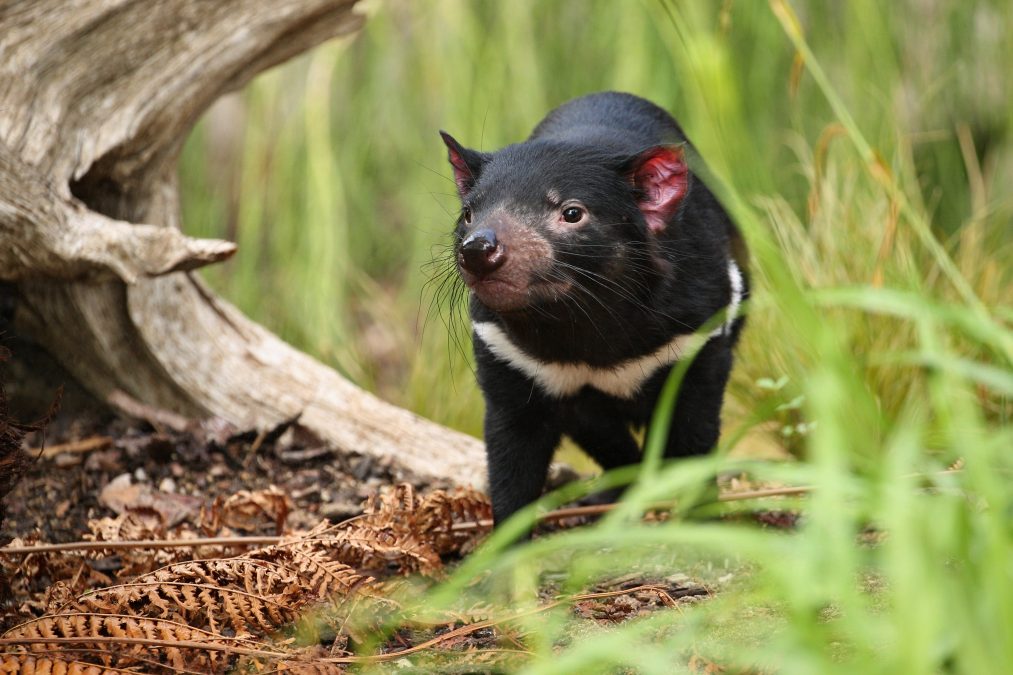
Coast Guard Suspends Search for Missing Cruise Ship Passenger Near Southwest Pass
February 18, 2022
Influencers 2022: Dr. Michael Garcia
February 18, 2022When someone says “Tasmania,” I’ll bet that the vast majority of people in PoV country, as well as maybe the rest of the U.S. and the world, think of Bugs Bunny’s nemesis from Looney Tunes cartoons—the Tasmanian Devil. However, I would never bet on this with the people of Australia, who know that Tasmania is a real thing. Tasmania is a fairly large and largely wilderness island off the southeastern coast of that continent. And not only is Tasmania real but so are the little, furry, pouched, fighting, biting, and spitting Tasmanian Devils found there.
But Tasmania is becoming famous for something else this year. It’s called the “Black Box.” It’s roughly the size of a large school bus, boasting thick, indestructible steel walls topped with solar panels. Inside, there’s a bunch of storage—both energy storage in the form of batteries and data storage in the form of hard drives and microchips. Sitting atop a vast granite plain and surrounded by ancient mountains, the Black Box looks like an updated design of the monolith for the film 2001: A Space Odyssey. But in this case, it might be 3001: An Earth Odyssey.
And why would someone go through the task of building such a large, remote, ultra-high tech, and no doubt expensive thing in the middle of wilderness? The Black Box of Tasmania is meant to capture and store scientific data, conversations, artefacts, headlines, tweets, news stories, and other forms of communication related to what humankind has done to create—and to either succeed or fail in reversing—climate change on Earth. And those steel walls are meant to withstand and outlast wildfire, drought, heat waves, storms, floods, wars, and this generation of humans. The hope is that someone, perhaps in a century from now in the aftermath of a climate catastrophe, will discover the Box and understand what happened to Earth and learn how to recover the planet. Anticipating this, an instruction booklet will be included inside.
No, this is not the plot of some futuristic, dystopian, post-apocalypse novel, and neither is it the first idea for a global repository of stuff that humanity might need following a catastrophe. During World War II, Russian botanist Nikolai Vavilov, having seen the wars and revolutions of the early 20th century, collected seeds from plants all over the world to replenish the world’s food supply in the event of military catastrophe. His seed repository survived the 28-month siege of Leningrad by Nazi Germany. Unfortunately, because he based his work on scientific principles rather than the Communist Party line, he was arrested in 1941. He died in prison two years later, knowing his Leningrad repository had survived but not, unfortunately, that his efforts served as models for seed banks now located in countries around the world, including the U.S.
At the same time that Vavilov was collecting the world’s seeds, a sculptor named Gutzon Borglum also had an idea for a great repository. With big chisels and bits of dynamite, Borglum reworked a granite mountainside in the Black Hills of South Dakota to create Mount Rushmore. But in addition to the well-known heads of the four Presidents, Borglum excavated a large chamber on a ledge behind Lincoln’s head. The 75-foot deep, 35-foot tall chamber was intended to serve as a repository of American artefacts, including historical documents like the Declaration of Independence. High up in the mountain, these items would be safely preserved for future generations, would resist war and environmental catastrophe, and would even serve as a welcome center in case interplanetary visitors stopped by. Borglum died before the chamber’s completion, and it was never completed according to plan, but today inscriptions can be found inside the chamber noting Borglum’s original ideas.
Humankind seems to like repositories. Just think of libraries or even your computer’s hard drive. We like to store and preserve stuff. It’s as if we anticipate the inevitability of wars and destruction and catastrophes or even simple losses that threaten to render our histories forgotten—or, just as bad, rewritten by others. “History is written by those who have hung heroes” I heard in a movie once. Maybe makers of repositories saw the same movie.
But what tale will be told from Tasmania in this, the age of misinformation? How will future generations and survivors of climate catastrophes find needles of truth in the haystack of tweets and fake news and political rhetoric? Hopefully, builders of the Black Box will include film footage of little, furry, and pouched Tasmanian Devils fighting, biting, and spitting in the wild alongside episodes of Looney Tunes. Maybe then, whoever discovers the box in the future can tell which things are real.







